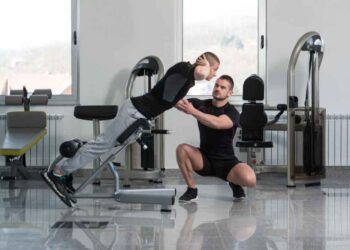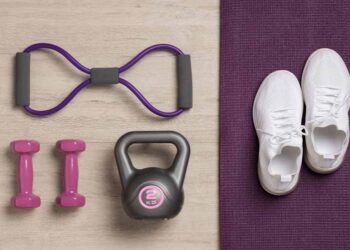Are you looking to improve your rowing technique and take your performance to the next level? Whether you’re a beginner or a seasoned rower, mastering the art of rowing requires more than just raw strength. It’s about perfecting your technique to maximize efficiency and minimize the risk of injury. But what are the secrets behind achieving a flawless rowing stroke?
In this article, we unveil the best-kept secrets of rowing technique that will help you unlock the full power of your strokes. From the fundamentals of the rowing stroke to advanced techniques, we’ll provide you with expert tips and advice to enhance your rowing form, boost your performance, and take your skills to new heights.
Key Takeaways:
- Mastering rowing technique is crucial for enhancing your rowing performance.
- Focus on the four critical components of the rowing stroke: drive, finish, recovery, and catch.
- Proper form and technique reduce the risk of injury and improve efficiency.
- Maintain a smooth and continuous motion during the drive phase for optimal power application.
- Execute the finish phase with firm pressure and maintain the correct lean-back angle for momentum maintenance.
The Drive: Perfecting Form for Power Application
During the drive phase of rowing, the rower harnesses their power to propel the stroke. It is a critical component of the rowing technique that requires precise form and coordination. The drive begins with a forceful leg push, generating power from the lower body and engaging the larger muscle groups. This leg drive provides the initial force that sets the motion in motion.
As the legs extend, the back follows suit and opens using the hips, allowing for a seamless transfer of power. This movement is crucial for maximizing the rower’s ability to generate force and maintain balance. The back and arm pull comes next, completing the drive phase. The arms pull the handle towards the chest, contributing to the powerful stroke. The sequence of legs, back, and arms working together creates a smooth and continuous motion essential for efficient power application.
It is important to maintain proper rowing machine form during the drive phase. The rower should focus on keeping their back straight, avoiding excessive leaning forward or backward. This position ensures optimal force transmission from the legs to the handle. The legs should remain engaged throughout the drive, fully extending without locking the knees, providing a strong and stable foundation for the stroke.
Smooth and continuous motion is not only crucial for power application but also for maintaining balance throughout the stroke. Jerky movements can disrupt the flow and compromise the effectiveness of the drive phase. Practicing and refining your rowing technique will help you develop a consistent and efficient drive, maximizing your performance on the rowing machine.
The Finish: Maintaining Form for Momentum
At the finish phase of the rowing stroke, it is essential to focus on maintaining proper form to ensure efficient momentum maintenance. The finish marks the end of the drive phase, where the handle is drawn into the body with firm pressure, swiftly reaching the ribcage. This powerful and controlled action plays a crucial role in propelling the rower forward and setting the stage for the subsequent recovery phase.
To execute the finish phase effectively, it is important to pay attention to two key elements: firm pressure and lean back angle. Applying firm pressure as you draw the handle towards your ribcage helps to maximize power transfer and maintain momentum. This controlled yet forceful movement ensures a seamless transition from the drive to the recovery phase.
Furthermore, maintaining a proper lean-back angle during the finish is crucial for optimal form and efficiency. A moderate lean of approximately 25-30 degrees from the vertical position is recommended. This lean-back angle allows for effective weight distribution and promotes a balanced posture that supports a smooth recovery phase.
However, it is essential to avoid over-leaning or under-leaning at the finish, as it can have counterproductive effects. Over-leaning may cause a loss of balance and inhibit the subsequent recovery, while under-leaning may result in decreased power application and disrupt the overall stroke rhythm.
In summary, the finish phase of the rowing stroke plays a vital role in maintaining momentum and ensuring a smooth transition to the recovery phase. By applying firm pressure while drawing the handle to the ribcage and maintaining a proper lean-back angle, rowers can optimize their form, enhance their performance, and achieve their goals on the rowing machine.

- Brauer, D. G., Nolte, V., & Pollok, B. (2020). Ergometer Rowing Technique: A Tutorial Review. Frontiers in Sports and Active Living, 2, 124. doi: 10.3389/fspor.2020.00124
- Filingeri, D., Friesenbichler, B., Paradis, P., Hausswirth, C., Brisswalter, J., & Rupp, T. (2017). Kinematic Changes during a High-Intensity 2,000-m Ergometer Rowing Performance after a Cycling Exercise. Sports, 5(2), 43. doi: 10.3390/sports5020043
The Recovery – Arms Extend, Body Pivots, Legs Break
The recovery phase in rowing is a vital component where rowers transition from the finish of one stroke to the catch of the next stroke. It is a period of relaxation and controlled movement that sets the rhythm and pace for the stroke rate. During this phase, rowers prepare their bodies for the upcoming drive by executing a series of coordinated movements.
- Arms Extend: The recovery begins with the hands moving away from the body, simultaneously extending the arms fully forward, maintaining a relaxed grip on the handle. This initial movement allows for the maximum reach and optimizes the rower’s body position for the next phase.
- Body Pivots: As the hands extend, the body pivots forward from the hips, maintaining a tall posture. The rower engages the core muscles, ensuring a smooth and controlled forward motion. This movement initiates the transfer of momentum towards the catch position and helps maintain balance throughout the stroke.
- Legs Break: Once the body has completed its pivot, the knees start to bend, breaking the legs towards the rowing machine. The degree of knee bend can vary depending on the rower’s preference and body mechanics. It is crucial to maintain a controlled and fluid motion, avoiding any abrupt or jerky movements.
The recovery phase provides a brief respite before the next stroke, allowing the rower to gather their focus and prepare for the power application during the drive. By maintaining relaxation and controlled movement, rowers can optimize their technique and maintain a steady rhythm throughout the rowing session.
Rhythm Setting for Optimal Performance
Setting the rhythm during the recovery phase is essential for maintaining a consistent stroke rate and overall performance. The recovery-to-drive ratio is a crucial factor to consider. An optimal ratio, such as 2-1, means that for every 1 second spent on the drive phase, 2 seconds are spent on the recovery phase. This ratio allows for a harmonious flow and ensures adequate time for relaxation and preparation before the next stroke.
Rowers should focus on finding their own rhythm and timing, taking into consideration their fitness level, training goals, and desired stroke rate. Monitoring and adjusting the recovery-to-drive ratio can help rowers find their optimal balance, maximizing efficiency and performance on the rowing machine.
| Recovery Phase | Key Points |
|---|---|
| Arms Extend | Relax the grip, fully extend arms forward |
| Body Pivots | Engage core muscles, maintain tall posture |
| Legs Break | Bend knees smoothly, avoid abrupt movements |
The recovery phase is crucial for rowers to prepare for the next stroke. It enables relaxation, controlled movement, and sets the rhythm for optimal performance. By executing the recovery phase with precision and considering the recovery-to-drive ratio, rowers can refine their technique, enhance their rowing experience, and achieve their fitness goals.
The Catch – Relaxation and Precision
The catch phase of the rowing stroke is where the next stroke begins. It is a quick and sharp action that minimizes delay, allowing for efficient stroke transition. To execute the catch correctly, the body should be poised, leaning forward with shins vertical and arms extended.
Avoiding excessive reach or “diving” at the catch is crucial to maintain balance and speed. It is important to find the perfect positioning that allows for a seamless transition into the drive phase. Quick and precise execution of the catch ensures a smooth flow and maximizes efficiency.

Expert Tip:
Focus on maintaining relaxation and precision during the catch phase. By doing so, you’ll optimize your stroke and improve overall performance.
Conclusion
Mastering proper rowing technique is essential for enhancing rowing performance. Throughout this article, we have provided a comprehensive breakdown of each phase of the rowing stroke, emphasizing the correct form for power application, momentum maintenance, controlled movement, and precision. By consistently practicing and applying these techniques, rowers can hone their skills, improve efficiency, and unlock the full potential of mastering rowing technique.
To perfect your technique, it’s crucial to seek expert coaching advice. Coaches can provide personalized guidance, helping you refine your form and improve your performance. Additionally, utilize resources such as video guides to further enhance your understanding and visual representation of the correct techniques.
Remember, the journey to mastering rowing technique is a continuous process that requires dedication and persistence. By incorporating expert coaching advice and perfecting your technique, you can enhance your rowing performance and enjoy the full benefits of this challenging sport. Keep pushing yourself and strive for excellence in every stroke.












